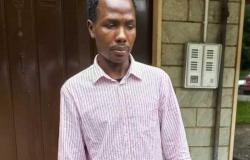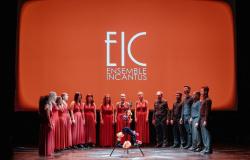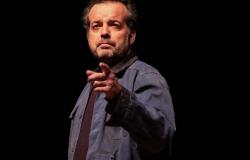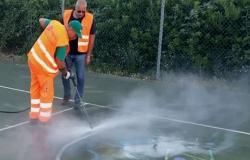«In these 81 years I have never spoken, I have never managed to bring out what happened in the tragic summer of 1943 in my city, but today I do so because I feel that it is necessary to transmit the memory of the horror that Foggia went through». Lidia Molinaro, 89 years old, was a child when Anglo-American bombs destroyed her home, killing her little brother and seriously injuring her father. «We were at home on a normal day when the bombs arrived. My father had a farm and was injured together with my brother while they were buying bread from the Angelone bakery to deliver to the workers engaged in the harvest. It was hell. My sister and I and my mother managed to save ourselves, but when we went to our countryside a few kilometers from Foggia we discovered that the retreating Germans, in addition to stealing sheep, horses and pigs, set fire to the wheat fields. We went as displaced persons to San Giovanni Rotondo, after a fortnight we returned to our city with immense pain at how they had reduced it. My mother managed to give my brother a burial in a Formica coffin placed in a grave because at that time mass graves were the order of the day. The horror of war continues to accompany me every day”, says Lidia Molinaro, a small and very elegant woman, very excited. Her testimony was the heartbreak of the day promoted by the civil war victims association of Foggia with the patronage of the Municipality of Foggia, hosted in the Fedora Hall of the “U. Giordano” and coordinated by the chief editor of the “Gazzetta”, Filippo Santigliano. A meeting dedicated to the theme of “Children and young people who are victims of the wars of yesterday and today” on the occasion of the anniversary of the bombings suffered by the city of Foggia in the summer of 1943.
At the meeting, after the greetings of the Mayor Maria Episcopo and the Councilor for Culture Alice Amatore, also the Vice President of the Little Martyrs Family Committee of Gorla (Milan), Natalina Ferri who lived through the tragedy of 20 October 1944, when Anglo-American bombers set off from the Castelluccio dei Sauri airstrip (10 km from Foggia) and dropped bombs on the province of Milan: a bomb, however, hit the Francesco Crispi elementary school and caused the death of 184 children and numerous teachers. In memory of the massacre, the excellent Foggia singer-songwriter Bruno Caravella dedicated his own videopoem and the “Filastrocca della pace”, the first work also created with the contribution of Geppe Inserra of Lettere meridiane.
After the introduction of Michele Corcio (Provincial President and National Vice President of the ANVCG) and the greetings of the national president of the association, Antonella telia (also present the delegates of the sections of Potenza and Benevento) and of Gianfranco Piemontese for the Foundation of Monti united di Foggia, two significant interventions to remember the reasons and consequences of the bombings on the city of Foggia from 28 May to 17 September 1943: that of Prof. Saverio Russo of the University of Foggia, of Maurizio De Tullio (Journalist and Researcher of the Library of Foggia “La Magna Capitana”) and Alberto Mangano (President of the Committee for a monument to the civilian victims of those bombings). Regarding the monument (it will rise in the station square), the Episcopo syndicate has assured that the final procedures are nearing completion.
Prof. Marco Impagliazzo (President of the Community of Sant’Egidio and Professor of Contemporary History at the Roma Tre University) and Enza delli Carri (Coordinator of the Volunteer Group of Foggia of Save the Children). Impagliazzo, in particular, underlined the importance of making “the immense tragedy of Foggia” more known. At the end of a very beautiful and strong day from an emotional point of view, the monologue “Coriandoli” by the actor Luigi Schiavone directed by Tonio Sereno. Fifteen minutes more or less of a story that talks about pain and death, but also about the moral and material reconstruction and the civil passion that characterized the people of Foggia after the tragic summer of ’43 and it would be appropriate to repeat it on various occasions (even in schools) to do not lose the memory of Foggia, a gold medal for civil and military valor (few cities in Italy have this privilege on their banner) and included by the Republic in the list of “martyr cities”.






